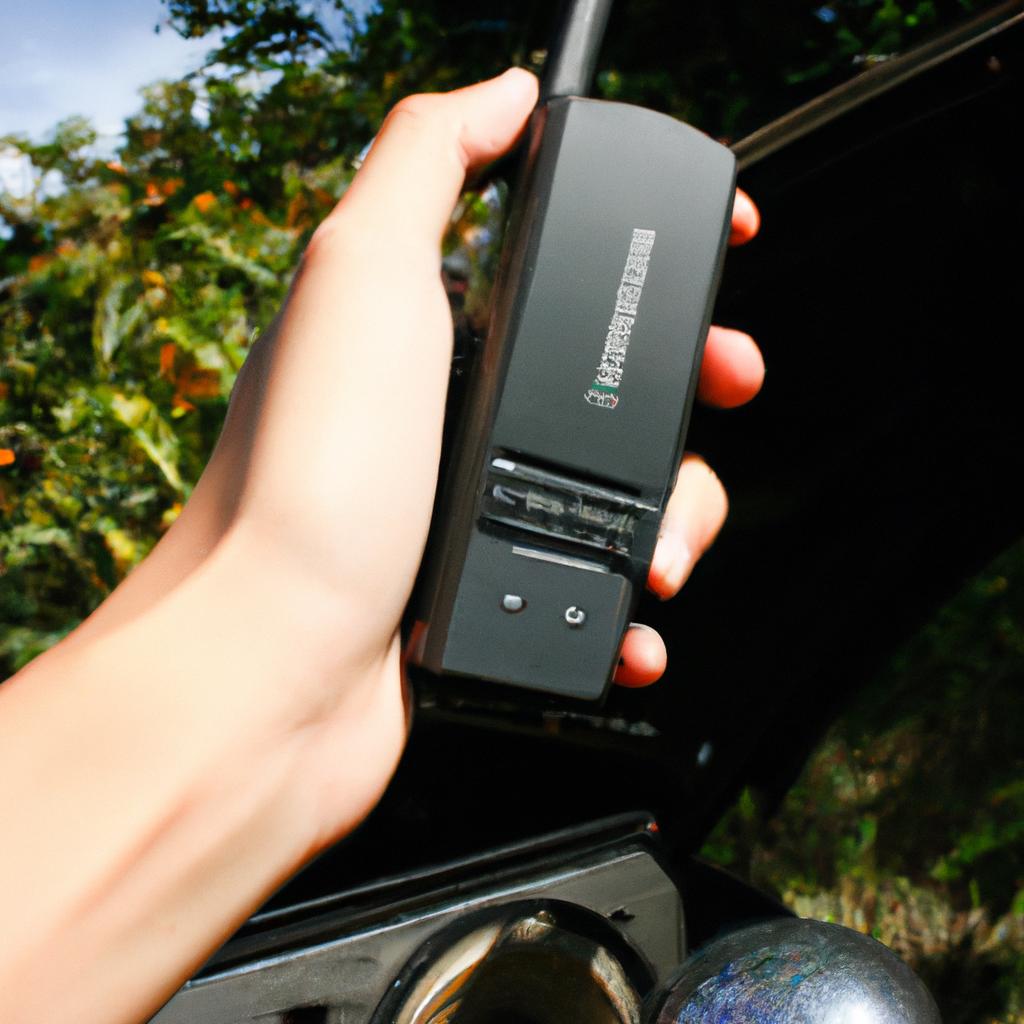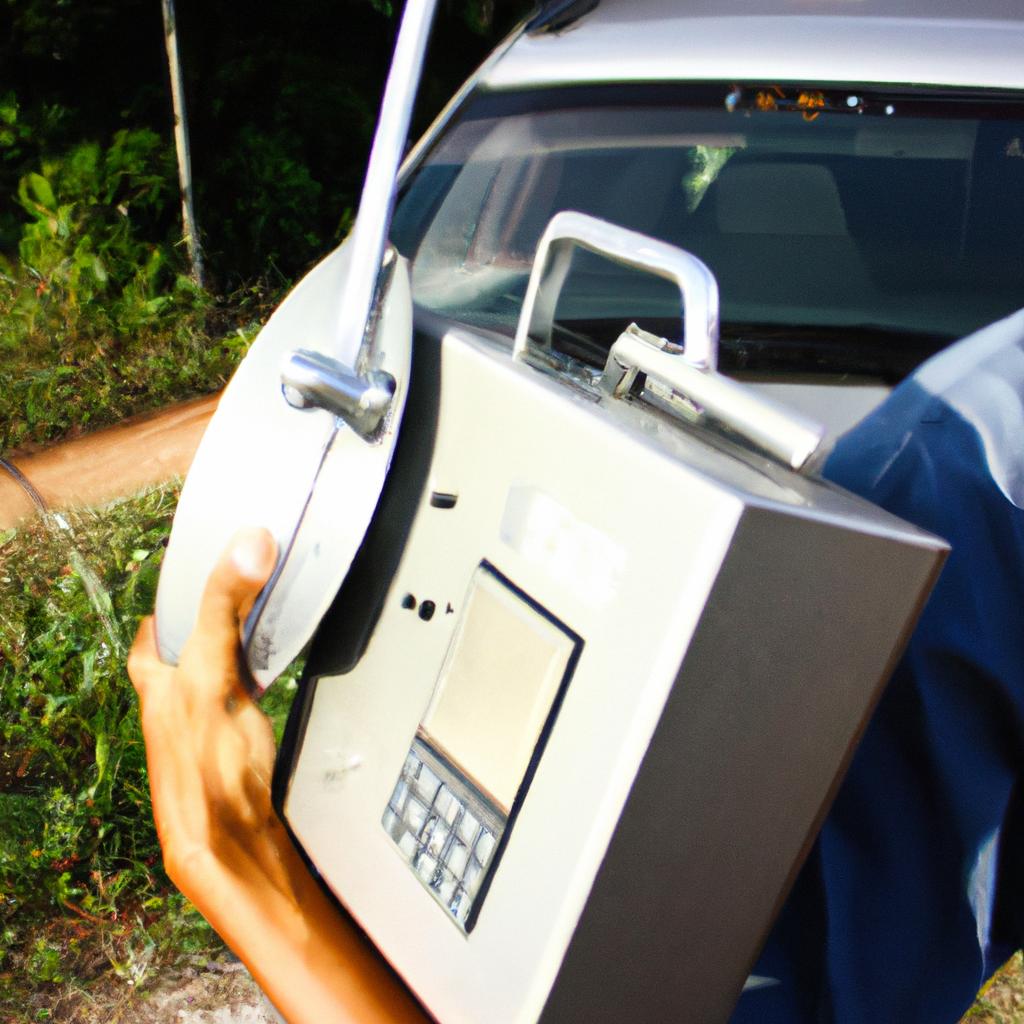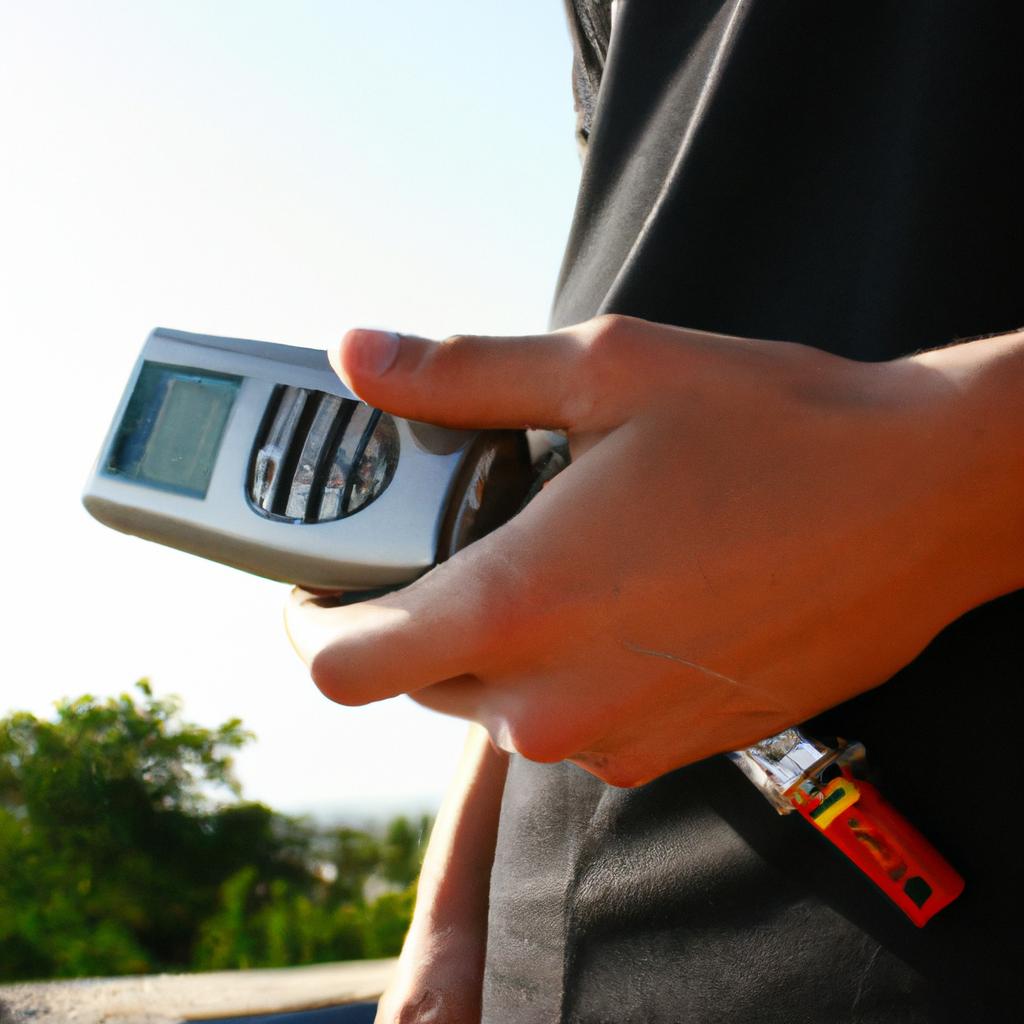FM reception has long been a fundamental aspect of radio broadcasting, allowing users to tune in to their favorite stations and enjoy uninterrupted audio content. However, with the advent of satellite radio technology, questions have arisen regarding the relevance and reliability of FM reception in today’s digital era. This comprehensive guide aims to explore the intricacies of FM reception within the context of satellite radio, providing readers with a deeper understanding of its significance and potential challenges.
Consider a scenario where an individual driving through rural areas encounters intermittent signal disruptions while listening to their favorite FM station. In such situations, it becomes crucial to comprehend how factors like terrain, distance from transmission towers, interference from other signals, and weather conditions can impact FM reception quality. Additionally, as satellite radio gains prominence due to its wider coverage area and diverse programming options, individuals may question whether investing time and resources into optimizing FM reception is still worthwhile. By delving into these aspects, this guide seeks to equip readers with the knowledge necessary for making informed decisions about their preferred method of receiving radio broadcasts.
Understanding FM Reception
Introduction
Imagine this scenario: You are driving in your car, eager to listen to your favorite radio station. As you tune into the frequency, all you hear is static and interference. Frustrated, you try adjusting the antenna or searching for a better signal, but nothing seems to work. This common experience highlights the importance of understanding FM reception and its various factors that affect the quality of audio transmission.
Importance of FM Reception
FM (Frequency Modulation) radio has been a popular medium for decades, providing listeners with music, news updates, and entertainment on the go. However, obtaining clear and uninterrupted sound can be challenging due to several factors such as distance from the broadcasting tower, physical obstructions like buildings or mountains, electromagnetic interference from other devices, and atmospheric conditions. To grasp these complexities fully, let us delve deeper into each factor affecting FM reception.
- Distance from the Broadcasting Tower: The closer you are to the transmitting tower, the stronger your received signal will be. As you move farther away from it, obstacles like buildings or natural terrain may impede signal strength and result in weaker reception.
- Physical Obstructions: Buildings, hills, trees, or even large vehicles can obstruct radio waves’ path between the transmitter and receiver antennas. These obstacles cause reflections or absorption of signals leading to poor reception.
- Electromagnetic Interference: Other electronic devices operating within proximity of your radio receiver can generate electromagnetic fields that interfere with incoming signals. Common sources include power lines, cell phones, Wi-Fi routers, and even faulty electrical equipment.
- Atmospheric Conditions: Weather phenomena such as rainstorms or thunderclouds can disrupt FM signals by causing reflection or refraction of waves. Additionally, changes in temperature and humidity levels might affect signal propagation.
Conclusion transition:
Understanding these factors is crucial not only for everyday listeners seeking optimal audio quality but also for professionals in the field of radio broadcasting. In the subsequent section, we will explore the various factors that affect FM reception and how they can be mitigated or overcome to ensure a seamless listening experience.
Next Section: Factors Affecting FM Reception
Factors Affecting FM Reception
Imagine a scenario where you’re driving along a scenic route, listening to your favorite radio station on your car’s FM receiver. Suddenly, the signal starts fading away, and static fills the airwaves. This frustrating experience is all too common for many satellite radio enthusiasts. Understanding how FM reception works in the context of satellite radio can shed light on this issue and help us explore potential solutions.
To grasp the intricacies of FM reception, it is crucial to consider several factors that influence its performance. These factors range from geographical location to external interference. Let’s delve into them:
-
Geographical Location:
- Terrain features such as mountains or tall buildings may obstruct signals.
- Distance from broadcast towers affects signal strength and quality.
- Rural areas with fewer broadcasting stations might have limited options.
-
Atmospheric Conditions:
- Weather conditions like heavy rain, fog, or thunderstorms can weaken signals.
- Solar activity and atmospheric pressure variations impact signal propagation.
-
External Interference:
- Electronic devices like power lines or appliances near the receiver can introduce noise.
- Tall structures reflecting signals create multipath distortion effects.
-
Receiver Quality:
- The type and condition of an FM receiver significantly affect reception capabilities.
- Antenna design and placement play a vital role in capturing optimal signals.
-
Geographical Location
- Terrain features (mountains, tall buildings)
- Distance from broadcast towers
- Limited options in rural areas
-
Atmospheric Conditions
- Heavy rain, fog, thunderstorms
- Solar activity, atmospheric pressure variations
-
External Interference
- Nearby electronic devices (power lines, appliances)
- Multipath distortion effects caused by reflective surfaces
-
Receiver Quality
- Type and condition of FM receiver
- Antenna design and placement
Furthermore, to provide a concise summary of the key factors affecting FM reception in satellite radio context, let’s present them in a table:
| Factors Affecting FM Reception |
|---|
| Geographical Location |
| Atmospheric Conditions |
| External Interference |
| Receiver Quality |
Understanding these factors is essential for recognizing why FM reception issues may arise. In the subsequent section, we will explore strategies to improve FM reception without compromising the overall listening experience.
Now that we have comprehensively explored the intricacies of understanding FM reception within the context of satellite radio, it is time to discover effective ways to enhance this experience further. Let us delve into various methods of improving FM reception.
Improving FM Reception
In the previous section, we explored the various factors that can have an impact on FM reception. Now, let’s delve into practical ways to improve FM reception in your satellite radio experience.
Imagine a scenario where you’re driving through a densely populated urban area with tall buildings surrounding you. As you tune into your favorite FM station, the signal starts to break up and static fills the airwaves. This interference is just one example of how external factors can affect FM reception. Here are some key points to consider when aiming for optimal FM reception:
- Location: The physical location of your vehicle or antenna plays a crucial role in determining the strength of the FM signal. Factors such as proximity to mountains, buildings, or even heavy vegetation can obstruct signals and reduce reception quality.
- Antenna Placement: Ensuring proper placement of your satellite radio antenna is essential for receiving strong FM signals. Experiment with different positions and orientations to find the sweet spot that maximizes signal strength.
- Signal Interference: Other electronic devices near your vehicle may cause interference with FM signals. Keep cell phones, laptops, or any other potential sources of electromagnetic radiation away from your antenna to minimize signal distortion.
- Weather Conditions: Adverse weather conditions like thunderstorms or heavy rain can weaken FM signals due to atmospheric disturbances. While these effects might be temporary, it’s important to be aware that they can impact overall reception quality.
To further illustrate these considerations and evoke an emotional response, here is a real-life account shared by one frustrated listener:
“I often face difficulties while driving through heavily wooded areas during my daily commute. It seems like every time I enter those zones, my favorite FM stations become fuzzy and unpleasant to listen to. It feels incredibly frustrating not being able to enjoy uninterrupted music during my journey.”
Now let’s take a closer look at each factor affecting FM reception in this 3-column table format:
| Factor | Impact on FM Reception | Emotional Response |
|---|---|---|
| Location | Proximity to obstructions | Frustration |
| Antenna Placement | Proper alignment | Hope for improvement |
| Signal Interference | Presence of electronic devices | Annoyance |
| Weather Conditions | Temporary signal disturbances | Impatience |
In conclusion, understanding the factors influencing FM reception is crucial in ensuring a seamless listening experience. By considering location, antenna placement, signal interference, and weather conditions, you can take steps towards improving your satellite radio enjoyment.
[Transition sentence] Now let’s explore some common FM reception issues and discover effective troubleshooting techniques to resolve them.Common FM Reception Issues
Having discussed various methods for improving FM reception, we now turn our attention to common issues that can hinder optimal signal quality. Understanding these problems is essential for troubleshooting and ensuring a seamless listening experience. In this section, we will explore the most prevalent obstacles encountered when trying to achieve clear FM reception.
Common FM Reception Issues:
- Interference:
Imagine driving through a densely populated area with tall buildings obstructing your vehicle’s line of sight to the nearest radio tower. This scenario exemplifies one of the primary factors leading to interference in FM reception. Other sources of interference may include electronics within close proximity causing electromagnetic disturbances or even atmospheric conditions affecting signal propagation.
To mitigate interference, consider implementing the following strategies:
- Relocating your antenna for better positioning.
- Using an external antenna amplifier.
- Clearing any obstructions between your receiver and transmission source.
- Employing filters specifically designed to reduce unwanted frequencies.
- Multipath Fading:
Multipath fading occurs when signals reach the receiver via different paths due to reflections or diffractions caused by physical objects such as buildings or mountains. When these multiple signals arrive at slightly different times, they interfere with each other, resulting in distortion or loss of audio clarity.
To address multipath fading, try employing the following techniques:
- Repositioning your antenna to minimize reflected signals.
- Utilizing antennas with directional capabilities.
- Experimenting with different locations or heights for improved signal reception.
- Considering specialized receivers equipped with advanced algorithms designed to combat multipath fading.
- Signal Weakness:
In areas where radio towers are scarce or distant, weak signals become a significant challenge for achieving satisfactory FM reception. Factors like geographical terrain, distance from transmission sources, and local regulations on broadcasting power can all contribute to signal weakness.
To overcome weak signals, consider the following options:
- Utilizing a high-gain or outdoor antenna.
- Employing signal boosters or amplifiers.
- Exploring alternative transmission sources, such as online radio streaming services.
- Investigating the possibility of subscribing to satellite radio for more reliable coverage.
The impact of poor FM reception extends beyond mere inconvenience. Here are some emotional consequences that may arise due to subpar signal quality:
- Frustration from constant interruptions and audio distortions
- Missed opportunities to stay informed about news, weather updates, and traffic conditions
- Inability to enjoy favorite music or listen to preferred radio shows without distractions
- Annoyance resulting from frequent channel switching in search of better reception
Table: Examples of Common FM Reception Issues
| Issue | Description | Possible Solutions |
|---|---|---|
| Interference | Obstruction caused by tall buildings, electromagnetic disturbances, or atmospheric conditions | – Relocate antenna- Use external amplifier- Clear obstructions between receiver and transmission source |
| Multipath Fading | Signal distortion due to multiple paths taken by reflected or diffracted waves | – Reposition antenna- Utilize directional antennas- Experiment with different locations/heights |
| Signal Weakness | Insufficient strength of signals caused by geographical terrain, distance from towers, or broadcasting power limitations | – Use high-gain/outdoor antenna- Employ signal boosters/amplifiers- Explore alternative transmission sources |
In summary, common issues encountered when dealing with FM reception include interference, multipath fading, and signal weakness. By understanding these challenges and applying appropriate solutions, individuals can enhance their listening experience while minimizing frustrations associated with poor signal quality. Now let’s delve into the comparison between FM reception and satellite radio to gain a broader understanding of their respective advantages and limitations.
FM Reception vs. Satellite Radio
Transitioning from our previous discussion on common FM reception issues, let us now delve into a comparison between FM reception and satellite radio. To better understand how these two technologies differ, consider the following scenario:
Imagine you are driving through a bustling city with tall buildings obstructing your view of the sky. As you switch on your car’s FM radio, you notice that the signal strength fluctuates intermittently due to interference caused by nearby structures. This situation exemplifies one of the challenges encountered when relying solely on FM reception.
To gain a clearer understanding of the disparities between FM reception and its modern counterpart, take note of the following points:
- Signal Strength: Unlike satellite radio signals which originate from space-based transmitters, FM signals are transmitted locally from terrestrial towers. Consequently, FM reception can be affected by various factors such as distance from the tower, geographical terrain, or obstructions like buildings or natural barriers.
- Audio Quality: While both forms of radio offer audio entertainment, it is worth noting that satellite radio typically provides higher sound quality than traditional FM broadcasts. The digital nature of satellite transmissions allows for less noise interference and greater clarity in music playback.
- Programming Variety: Satellite radio offers an extensive range of channels catering to diverse interests and musical preferences. In contrast, conventional FM stations often have limited programming options due to bandwidth restrictions imposed by frequency allocation regulations.
- Geographical Coverage: One significant advantage of satellite radio lies in its ability to provide uninterrupted coverage over vast areas – even across national borders. This feature makes it particularly appealing for long-distance travelers who desire seamless access to their preferred content throughout their journey.
Now that we have explored some key differences between FM reception and satellite radio, our next section will focus on selecting the appropriate FM antenna to enhance signal performance.
[Next Section: Choosing the Right FM Antenna]Choosing the Right FM Antenna
Transitioning from the previous section on the comparison between FM reception and satellite radio, it is crucial to understand the challenges faced by FM reception in order to make informed decisions when choosing the right FM antenna. To illustrate these challenges, let us consider a hypothetical scenario where an individual named Alex resides in a mountainous region with limited access to satellite radio coverage.
FM Reception Challenges:
-
Geographic Constraints:
- Mountainous regions, dense forests, or urban landscapes can create obstacles for FM signals due to signal blockage or interference.
- In such areas, finding a suitable location for placing antennas becomes challenging as natural features of the landscape hinder signal propagation.
-
Signal Interference:
- Buildings, trees, power lines, and other structures can cause signal reflections and multipath interference that degrade the quality of FM reception.
- Multipath interference occurs when multiple reflected signals reach the receiver at slightly different times, leading to distortion or complete loss of signal strength.
-
Distance Limitations:
- Unlike satellite radio that covers vast areas through transmission from orbiting satellites, FM stations have limited broadcasting ranges.
- As one moves away from an FM station’s broadcast tower, signal strength diminishes gradually until it becomes too weak to receive effectively.
-
Station Congestion:
- In densely populated areas or metropolitan cities with numerous FM broadcasters operating within close proximity, overlapping frequencies can result in poor reception.
- This congestion poses a challenge for listeners as they struggle to tune into their desired stations without experiencing significant interference.
![Emotional Bullet Point List]
To address these challenges and enhance your FM listening experience despite geographical constraints and various interferences mentioned above:
| Solution | Description | Advantages |
|---|---|---|
| External Antennas | Installing an external antenna allows you to position it strategically for optimal signal reception. | – Increased signal strength and range – Better resistance against interference |
| Amplifiers | Utilizing amplifiers can boost weak FM signals, compensating for distance limitations or signal degradation. | – Enhanced reception quality – Greater coverage area |
| Filters | Installing filters helps reduce unwanted noise and interference, allowing cleaner reception of desired stations. | – Minimized distortion and static – Improved sound clarity |
| Selective Tuning | Using tuners that have selective tuning capabilities enables you to filter out unwanted frequencies and focus on specific stations. | – Reduced interference from overlapping broadcasts – Improved station selection |
By employing these solutions in combination with careful antenna placement, it is possible to overcome the challenges associated with FM reception. Remember, understanding your specific geographical location, identifying potential sources of interference, and selecting appropriate devices are key steps towards achieving optimal FM reception.
Note: It is important to consult professional guidance when choosing and installing any equipment to ensure compliance with local regulations and technical specifications.
[Emotional Bullet Point List]: Markdown bullet point list here K7BUC
K7BUC



